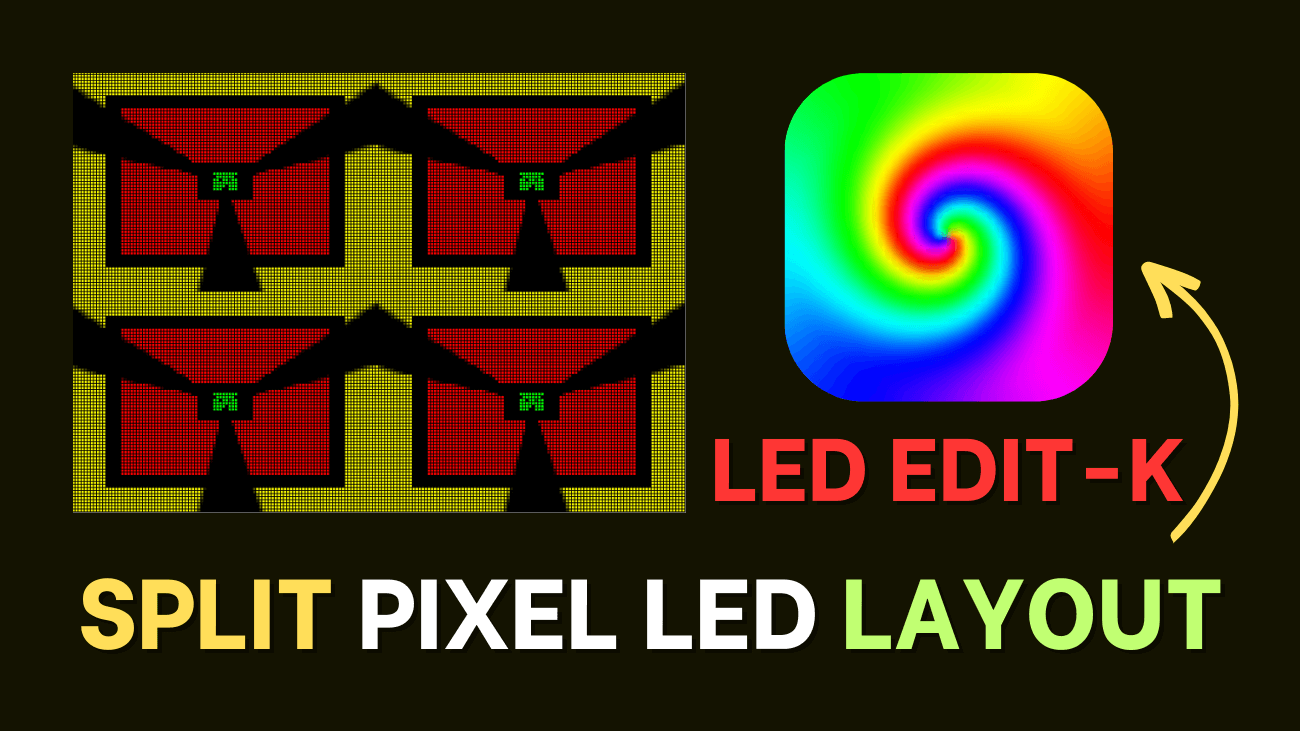
Split Pixel LED Layout to Different Sections in LEDEdit-K
You can split pixel LED layout into different sections and record videos or animations in each section in the LEDEdit-K version. This is one of the most useful features of the LEDEdit software. You don't have to redesign the animation or the video files to get the split effect from your layout.
With this feature, you can split the screen into different sections and play videos in each section at the same time. In other words, simultaneous video playback of different areas of the layout You can split the layout as much as possible. The best part is that the split screens you create are not permanent, which means you can change the split screens anytime you want.
Table of Contents
If you are new to LEDEdit-K software, please check out the [How to Use LEDEdit-K Software: Complete Tutorial]. In this tutorial, I'm not going into the basics of LEDEdit-K, such as creating a new project, creating a layout, recording or programming, editing, and exporting. Please refer to that article before proceeding.
Split Pixel LED Layout in LEDEdit-K
1. Create a new project.
2. Create a layout. (I'm going to create a 200×144 rectangular layout using the auto layout feature).
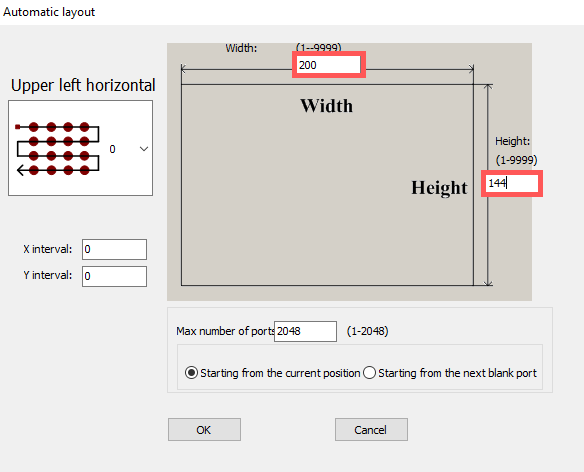
3. Go to the program tab and select “Program” from the list.
4. Use the tab navigation buttons to reach the “screen” tab and select the “screen” tab.
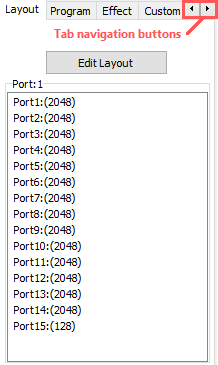
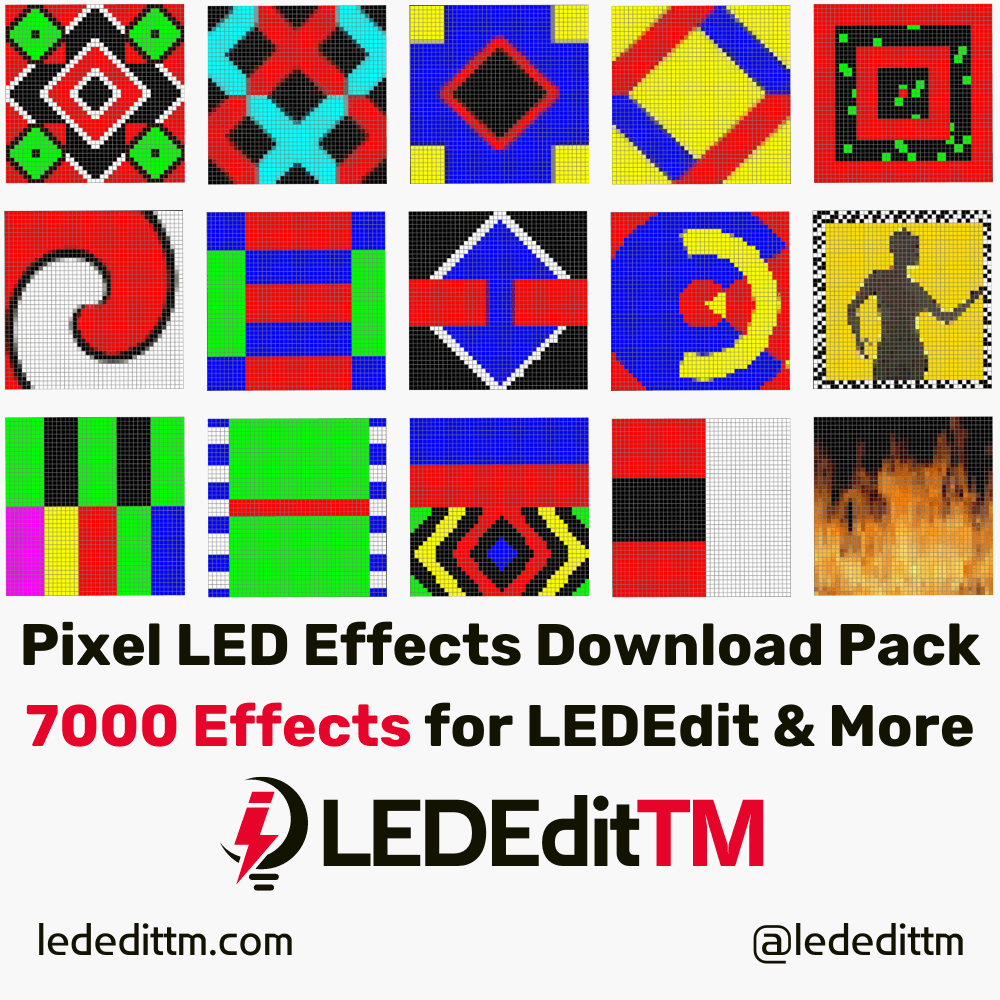
Pixel LED Effects Download Pack: 7000 Effects
- Files: 7000+
- Size: 25 GB
- Formats: SWF, TOL, AVI, MP4, and GIF
Creating a screen
To create a screen or split the layout, you need to select the section (a square or rectangle-shaped area of the layout) that you need from your layout. When selecting an area using the mouse cursor, you start from a point, which is the starting point, and you leave the mouse button at the end of the selection, which is the endpoint.
In LEDEdit-K, the pixel led at the start of the selection is called “End Pixel“. These are the two-pixel LEDs that we need the coordinates for. There are two ways to select the section from your layout:
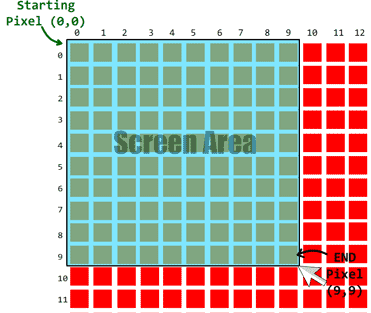
Selecting Using Mouse
To select a section using the mouse cursor, move your mouse cursor to the top of the start pixel, press and hold “Ctrl” on your keyboard, and click the left mouse button. Then, move the mouse cursor to the top of the end pixel (while holding the “Ctrl” button) and click the right mouse button, which will create the section automatically.
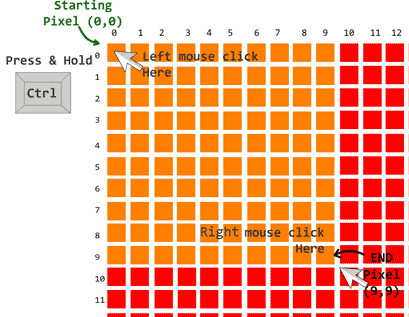
Selecting Using Coordinates
How to get the coordinates?
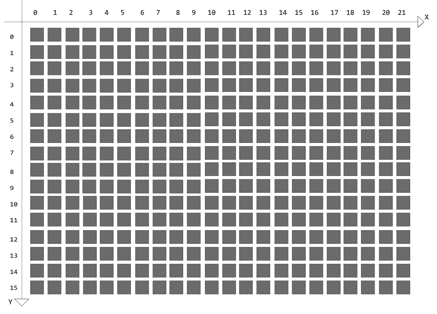
Think of the pixels in your layout as being on a Cartesian coordinate system, and that way you can get the “X” and “Y” coordinates of the start and end pixels. Note that the (0, 0) coordinates are included, which means that the first Pixel LED's coordinates are zero in the “X axis” and zero in the “Y axis“.
If your layout is small, you can also easily get the X and Y coordinates of the pixels by moving your mouse cursor on top of the pixel LED that you need the coordinates of, and at the bottom of the LEDEdit software in the status bar, you can see the coordinates of that pixel in the Position value as Pos:(x,y).

But for large layouts, you need to create your diagram and get the coordinates of the start and end pixels. Make sure to include the zero-by-zero coordinates. The diagram shown above shows how I plan to split my layout into four equal sections.
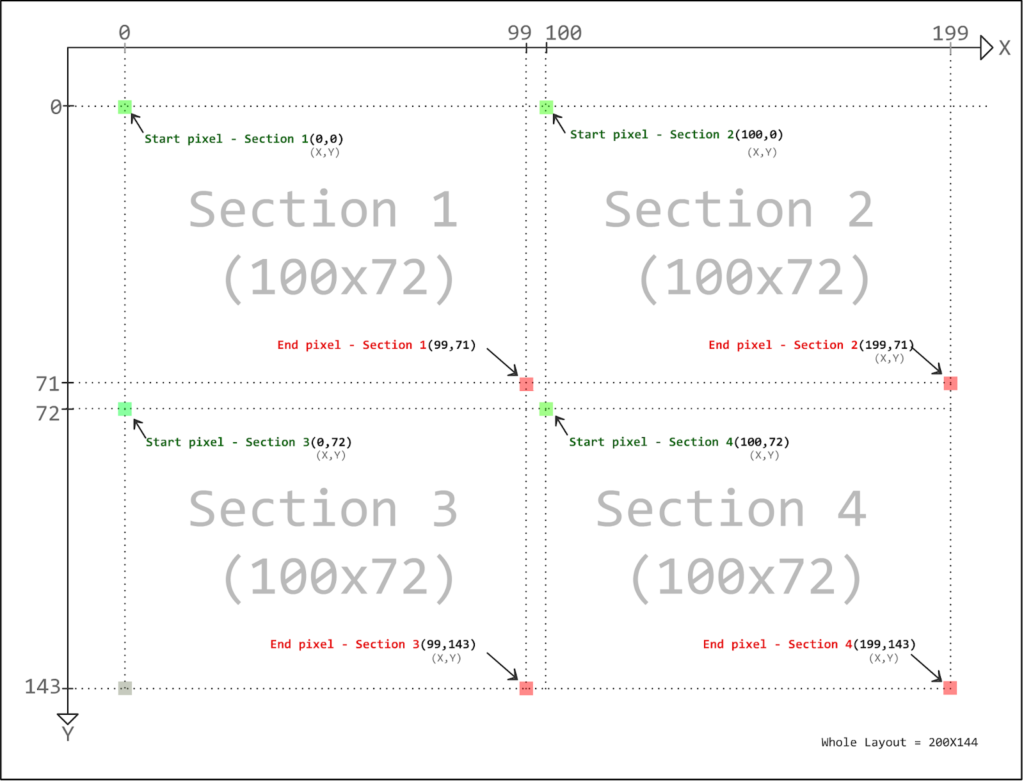
Click and check the “☑ Enable the split screen” check box.
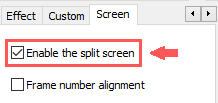
5. Input the start and end pixel X and Y coordinates in the text fields under “Setting parameters“.
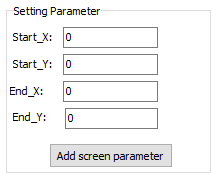
- Start_X: The start pixel's X coordinate.
- Start_Y: The start pixel's Y coordinate.
- End_X: The end pixel's X coordinate.
- End_Y: The end pixel's Y coordinate.
6. Click on the “Add screen parameter” button. You will see the section that you created highlighted in red.

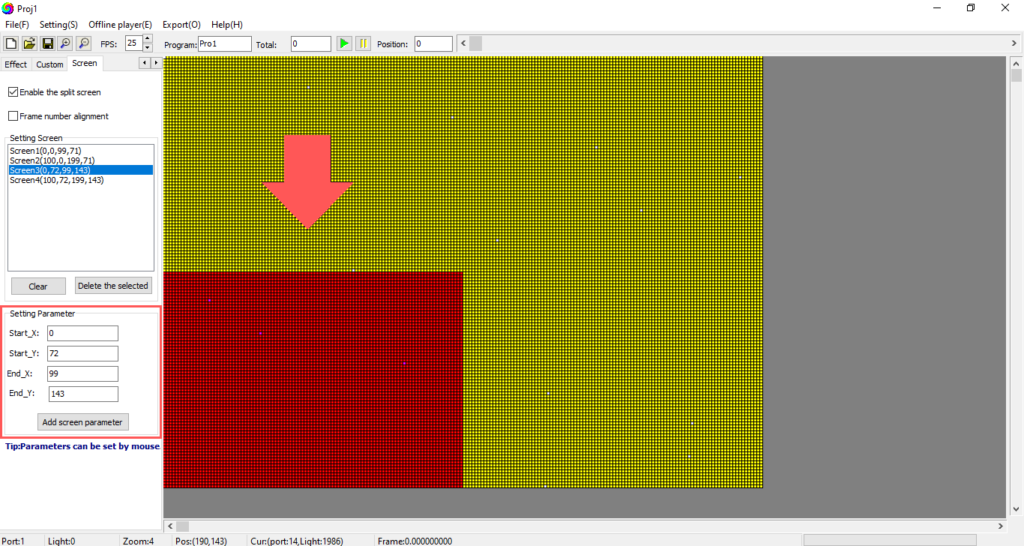
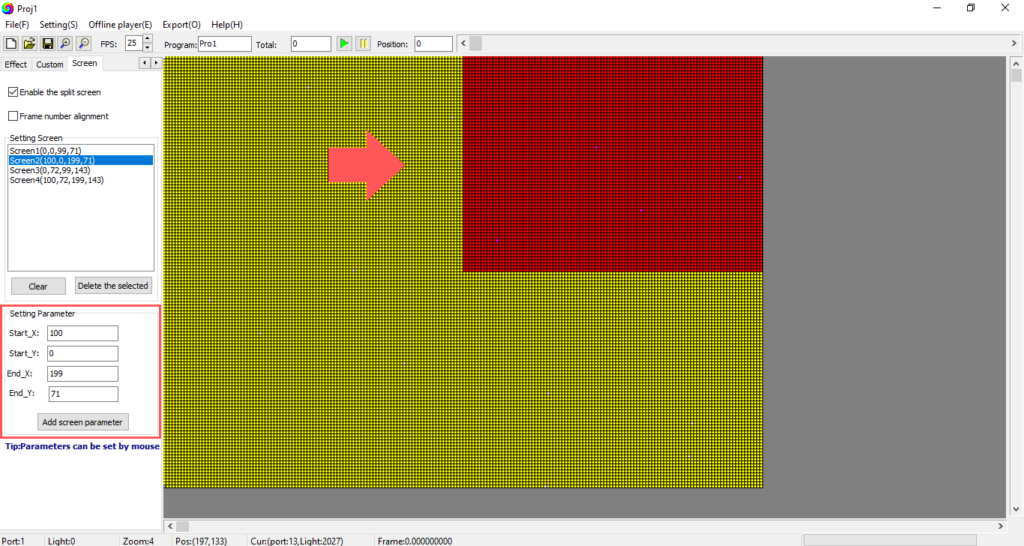
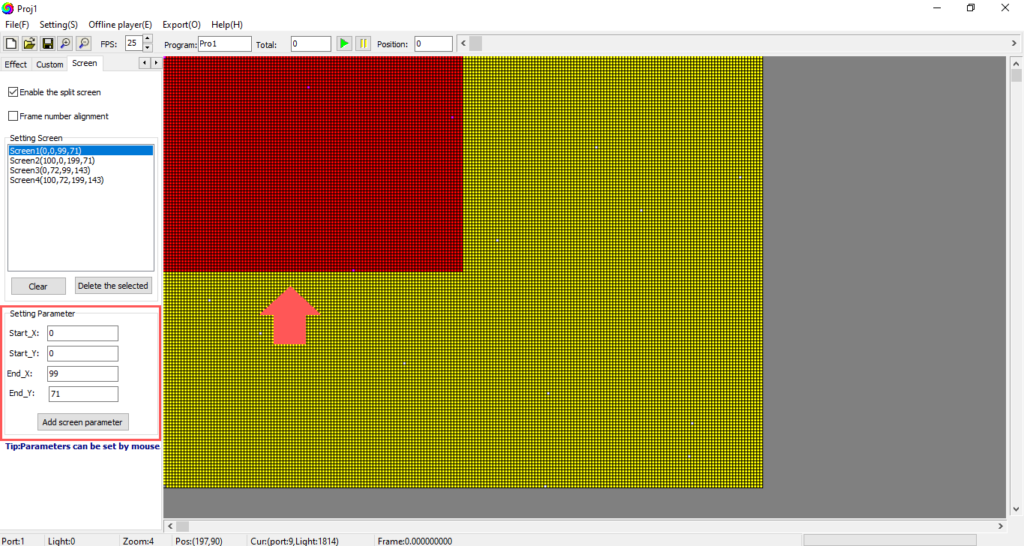
7. Select the section or the screen that you want the animation to be recorded from the “Setting screen” list and click on the “Effect” tab.
8. Use the time slider or the frame slider to select the frame in which you want your recording to start.

9. Open a video or animation by clicking on the “Open video” button. You will see the animation or video being played in the section you selected.
10. Now click on “Record” to record and then “Stop Record” to stop the recording, or use the “Fast Record Video” button to record the entire animation or video automatically.
To switch the sections, go back to the “Screen” tab and select another screen or section from the “Setting Screen” list. Come back to the “Effect” tab and continue from step 8.0 above.
Simultaneous Playback
Simultaneous video playback is when videos or animations in different sections of the layout play at the same time. To record a video or an animation to be played at the same time, we need to record each section separately but with the same timestamp.

11. In the “Screen” tab, select the first screen that you want the video to be recorded on, then go to the “Effect” tab.
12. Go to the frame where you want the recording to start using the frame slider.
13. Open a video or animation by clicking on the “Open video” button.
14. Now click on “Record” to record and then “Stop Record” to stop the recording, or use the “Fast Record Video” button to record the entire animation or video automatically.
15. Go back to the “Screen” tab and select the screen or section that you want the simultaneous video on with the first screen from the screen list, then come back to the “Effect” tab.
16. Go to the frame that you chose in the above 12.0 step, using the frame slider. Follow steps 13 and 14 above. If you want another simultaneous video playback section to be recorded, follow step 15 above.
Download LEDEdit Effects
- Pixel LED Effects Download Pack: 7000 Effects for LEDEdit
- Pixel LED Effects Download for LEDEdit, Jinx, NeonPlay, and More
- Pixel LED Thoranam Effects 10X60 Pack1 For LEDEdit Software
- Pixel LED Thoranam Effects 10X60 Pack2 For LEDEdit Software
- Pixel LED Thoranam Effects 16X64 Pack1 For LEDEdit Software
- Pixel LED Thoranam Effects 15X60 Pack1 For LEDEdit Software
If you like LED software, you may also like:
We hope you find this tutorial useful. Thanks for reading.